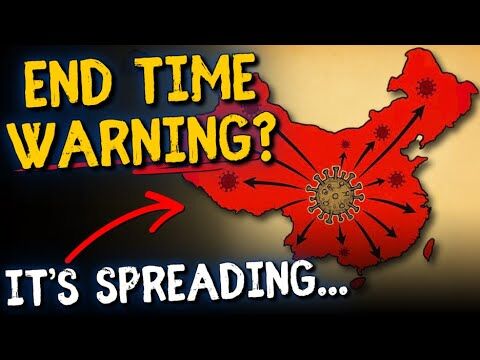In Nepal, the world’s only official Hindu state, Christians are breaking strict
religious laws to win converts.
Every October, millions of Nepalis celebrate Deshain, the most important Hindu religious holiday. On the eighth day of the 10-day celebration, men pull out their razor-sharp khukuris, and the slaughter begins.
According to tradition, the goddess Durga is to be worshiped through animal sacrifices for her victory over evil. Chickens, ducks, goats, sheep, water buffalo–none are exempt from having their throats slit or heads lopped off. Their blood splatters stone altars strewn with flowers, rice, grains and coins. It sprays taxis, buses, trucks, even motors at hydroelectric power-plant facilities.
“I’ve heard Westerners say the Nepalis are savages,” says Sarla Mahara, Nepal director for Christian Aid Mission, an agency assisting approximately 169 indigenous missions worldwide. “But in reality, the blood sacrifices simply show their search for God.”
Mahara knows what she’s talking about. Born and raised a Nepali Hindu, she converted to Christianity at age 24. Her relatives still offer animal sacrifices.
“The Nepalis have an amazing understanding of God and sin, more so than North Americans,” Mahara says. “Their word for sin–pap–clearly conveys the concept. Like in Old Testament days, their sacrifices are attempts to get rid of that sin.”
The spiritual search infiltrates every aspect of life in the world’s only official Hindu kingdom, landlocked between India, China and Tibet. With Hinduism embracing 330 million gods, the capital, Kathmandu, boasts more temples than houses and more idols than inhabitants. Chants and strains of tantric hymns haunt twisted ancient streets dotted with pagodas, stone idols, spinning prayer wheels and multicolored prayer flags.
Of the 24 million people populating Nepal, almost 75 percent are Hindu, according to Operation World’s 2001 statistics. Buddhists make up 16
percent, followed by Muslims with 5 percent and Christians with less than 2 percent.
A recent government census downplays Christianity’s growth, reporting its presence as less than 0.45 percent. Nepali pastors refute the census results, saying some areas were not properly surveyed because of the 6-year-old Maoist insurgency that has claimed more than 4,000 lives. Also, Christians claimed to be Hindus to avoid discrimination.
Despite the lack of written Scriptures (there are at least 124 distinct languages spoken in Nepal), the church is growing exponentially. Pastor Simon Pandey, secretary of the National Churches Fellowship of Nepal, believes there are 500,000 Christians in 3,000 or more congregations in the Himalayan kingdom today–a stark contrast from 1959 when the first church group was formed with 29 believers. Most have converted in the last decade after a bloody revolution in 1990 that left hundreds dead, instituting a constitutional monarchy after years of rule under an absolute monarchy.
Nepal’s borders opened to the outside world in 1951, at which time a limited number of foreign missionaries and aid organizations were allowed to enter. Since then, in an attempt to preserve the Hindu kingdom, the government has upheld laws condemning evangelism or conversion to other faiths. At the same time, it claims religious freedom, as long as one follows the faith of his or her parents.
“The constitution says one can practice his faith–Islam, Christianity, Buddhism, Hinduism, whatever–but conversion is against the law,” Mahara says. “If you’re a second-generation Christian, it’s OK because you’ve inherited your faith from your parents. It’s like a catch-22. How are you going to have second-generation Christians if conversion is illegal?”
Baptism is considered the ultimate proof of conversion. Performing the rite can result in a six-year prison sentence. The person being baptized can face a prison term of up to two years. Church meetings are technically illegal, although congregations are generally free to worship within the confines of their buildings, which are registered under the names of three or four members.
A Land of Miracles
Whether or not the law is enforced often depends upon individual police officers’ and local authorities’ attitudes toward believers. If a regional government representative is anti-Christian, believers face a greater degree of scrutiny and possible persecution. Urban Christians enjoy greater freedom than their rural counterparts, who find that oppression often comes more from family and society than from the law.
“Christianity is still regarded as the foreigner’s religion,” Mahara says. “Converting brings shame. New believers are regarded as untouchables, the caste you don’t mix with.”
The Maoist uprising has presented believers with new challenges. In some regions, Maoists have closed churches. In other areas, they forbid Christians from removing political banners they’ve hung.
“Because of the Maoists’ takeover attempt, police can arrest or kill anyone suspected of being a terrorist,” explains John Schwartz of Gospel For Asia (GFA), an agency that provides Bible training for 6,000 national believers across Asia. “These laws are being used against Christians, like in the case of ‘Brother S,’ a GFA missionary accused by Buddhist lamas [monks] of being a terrorist, then threatened by police with death if he continued to preach in his village.”
Manja, another of GFA’s Nepali missionaries, was imprisoned two years ago after being accused of murder. He was sentenced to 20 years incarceration even though witnesses testified to his whereabouts on the day of the crime.
Despite opposition, God is building His kingdom, largely in the countryside among illiterate villagers. Extreme poverty and political instability have left people hungry for truth.
Physical healing is one of the main tools God is using. One American missionary (who asked not to be identified because of security reasons) has devoted more than three decades to Scripture translation. He estimates that miracles and healings are responsible for at least 80 percent of conversions among villagers.
“These people aren’t worried about getting to heaven,” he says. “They’re worried about basic survival–having enough food to eat, not falling off walking trails, keeping their babies alive. They’re worried about surviving the demons. They’re not going to adopt Christianity if God doesn’t have the power to heal them or meet their needs.”
He recalls several situations in which villagers have been healed from poisonous snakebites, which, in rural Nepal, mean certain death. In one case, a viper bit a woman’s hand. As the victim’s arm swelled, she called on a local believer, Prem Singh, to pray. He did so, but only after presenting the gospel to her. After he’d prayed for healing, the pain ebbed down her arm and out her fingers. The woman returned to work the next day.
In another instance, a viper bit Singh in his foot. As poison ran up his leg, he defied Hindu tradition that says snakes are gods and not to be killed. He grabbed a stick, killed the viper and prayed for healing. Within minutes, the pain drained down his leg and out his foot. Singh finished herding his goats and walked home. Two fang marks in his foot proved his story and cemented his reputation as having the gift of “snake-bite medicine.”
Believers report that not everyone who witnesses a healing accepts Jesus as his or her Savior. Witch doctors sometimes claim the credit. For that reason, believers often ask the sick or wounded, “When you’re healed, who will you say healed you–Jesus or the witch doctor?” If they reply, “Jesus,” they receive prayer.
The missionary speaks of Pitam and Kumari, a Christian couple frequently asked to pray for the sick and mentally ill. On one occasion, a man and woman facing the impending death of their 30-year-old daughter approached them. Discouraged by seeing people refuse to believe even after witnessing many healings, Pitam and Kumari prayed, “God, do something really big this time!”
When they arrived at the woman’s house, they found her near death, lying on her mud-and-rock veranda. The moment they stepped onto the veranda to pray, she sat up and began talking.
Visions of Christ
Daniel Ghale, a former witch doctor who converted to Christianity after reading the New Testament, directs one of Kathmandu’s half-dozen Bible training centers. He says he has witnessed the lame walk, the blind see and the deaf hear. He reports that villagers’ animals are also healed when believers pray for them.
Stories are told of villagers being saved after encountering visions of Christ while walking along remote footpaths, or of villagers praying to a god named Jesus after dreaming about Him.
Mahara says she has met illiterate people able to recite the entire Bible. “We sat around the fire at night, and they told stories and recited Scripture like I’ve never seen before,” she says. “These are simple people–they just believe. All they know is that Jesus Christ is God, and He died for them. He’s their Savior. There’s not much question regarding doctrine or theology or biblical interpretation–the things that become stumbling blocks to intellectuals.”
The situation is different in remote areas and urban centers where denominations including Baptists, Presbyterians, Pentecostals, Lutherans and Anglicans have moved in since the 1990 revolution. As congregations become affiliated with denominations, many Nepali pastors are sent to the United States for education. When they return, they often incorporate American church traditions into worship.
“Nepali worship services are becoming like mini-American churches. That saddens me,” Mahara says.
Even though mass gatherings are currently squelched due to Maoist activity, the last decade witnessed unprecedented events uniting believers from all denominations. In 1991, a Billy Graham crusade was broadcast into a Kathmandu stadium via satellite each evening for nearly a week. Approximately 5,000 people attended each service. In 1993, the government granted permission for a peaceful Easter march through the city. At least 5,000 believers participated.
The church’s growth continues to explode even though it faces persecution and opposition from the World Hindu Federation which has openly demanded that the government formulate policies to control proselytizing.
Approximately one-fourth of the population has viewed the Jesus film. Bible correspondence courses have resulted in many new churches being planted. According to Operation World’s statistics, there are now more than 13 Bible colleges and seminaries. Smaller Bible training centers disciple groups of eight to 12 men and women for several months each year.
Although hundreds of graduates are working among the millions of unreached Nepalis in India, Sikkim and Bhutan, the majority are returning to their own villages, evangelizing and encouraging fellow believers. Key denominational and indigenous agency bodies also are discussing plans for a unified discipleship plan.
To the 500,000 disciples of Christ living in the shadow of the Himalayas, the bloody Deshain ceremony no longer marks Durga’s victory over evil. Rather, it provides an opportunity for them to gather with fellow believers to celebrate ultimate victory gained through Christ’s perfect sacrifice.
They’ve been set free from the religion of Hinduism and a way of life steeped in ritualistic tradition. They’re willing to pay the price so their countrymen can hear the gospel and experience the victory for themselves.
Grace Fox is an award-winning writer from British Columbia. She and her husband worked in Nepal for almost three years.
Adherents worldwide: 900 million
Largest concentrations: Nepal, India, Mauritius, Guyana
History: Hinduism is one of the oldest and most complex religions, having originated in India around 1500 B.C. as a polytheistic, ritualistic system of beliefs. As it developed, the rituals performed became so involved that a priestly class was created and a form of scriptures, the Vedas, were written to provide instructions for how to conduct the rituals. Today Hinduism, a syncretistic blend of religious, philosophical and social doctrines, comprises an entire family of religions, with widely varied beliefs and practices.
Core beliefs: Although Hinduism is extremely diverse, most Hindus believe in Brahman, the Three-in-One God (Brahma, the Creator; Vishnu, the Preserver; and Shiva, the Destroyer); Brahman-Atman unity (the understanding that man is extended from and is one with Brahman); the Caste System; the Law of Karma; reincarnation (a series of rebirths through which each soul, by right living, can rise to a higher state); nirvana (the final state reached when the soul is freed from the cycle of rebirths); and Dharma (the Law of Moral Order, which must be followed to reach nirvana).
Its new converts say Hinduism offers a spirituality without absolutes.
The U.S. Congress got a taste of Americans’ broadening thirst for Eastern spirituality on September 14, 2000, when Venkatachalapathi Samuldrala became the first-ever Hindu priest to deliver the opening-day prayer to the House of Representatives.
Samuldrala, from the Shiva Vishnu Hindu Temple in Parma, Ohio, delivered the invocation before India’s Prime Minister, Atal Bihari Vajpayee, addressed a joint session of Congress. Today America boasts a practicing Hindu population of approximately 1.4 million people, a mere speck of the estimated 900 million Hindus in the world.
In the last 30 years, Hinduism surfaced in America quietly through the popularity of self-help practices such as yoga and meditation. But a more formal, ritual-worship, Americanized brand of Hinduism has found easy inroads into a highly mobilized, materialistic American society that loathes the confinement of traditional religion, with its buildings and hierarchical establishment.
In recent years, Hindu temples have sprung up all over the United States in cities such as Houston; Charlotte, North Carolina; and Orlando, Florida. Hinduism had a slow start in the states until American writers including Ralph Waldo Emerson (1803-1882) and Henry David Thoreau (1817-1862) lauded the Bhagavad Gita, a poetic Hindu devotional work.
In 1893, Swami Vivekananda introduced the nature of Hindu ideals in a public forum at the World’s Parliament of Religions in Chicago. A year later, the swami founded the Vendanta Society in New York–the first Hindu organization aimed at converting Americans to Hinduism.
But it was the Immigration Act of 1965 that brought a huge influx of Asian immigrants to the United States. Hindu immigrants from India began building temples with a focus on the ritual worship of images during the 1970s, mainly under the branch of the International Society for Krishna Consciousness. Better known as the Hare Krishna Movement, it is not accepted as legitimate by many mainstream Hindus in India, despite support from the late Beatle George Harrison.
In America, says noted author and missions strategist Dean C. Halverson, spirituality is in, and organized religion is out. Halverson is a campus minister and the director of Apologetics for International Students. He befriends and shares Christ with Hindus and people of other faiths by working with international students.
“Hinduism is popular because it offers spiritual techniques, and it leaves the matter of supplying a foundation for convictions or beliefs up to the individual,” Halverson says. “Because our culture does not believe in absolute, objective truth, we place value not in the finding of the truth, but in the searching for it.
“Christianity, on the other hand, is viewed as answering the question, ‘What does He require of me?’ But the idea of ‘requiring something of me’ is not popular in today’s culture.”
Hinduism, Halverson notes, offers a path, but not so much a goal. “Yes, there is a goal, but the goal is so far out of reach that it is virtually unreachable. The goal requires innumerable incarnations to attain. But that’s OK, Hindus think, because there’s joy in the search.”
Billy Bruce






























































